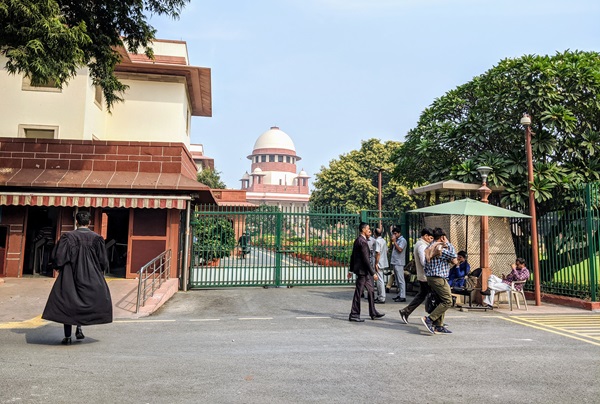.png)

Sachin Malhotra, a banking veteran with 26 years’ experience, was an MD at Standard Chartered, analysing financial cycles and economic trends
August 28, 2025 at 7:35 AM IST
The Insolvency and Bankruptcy Code, enacted in 2016, has often faced criticism for delays that stretch well beyond the intended 180-day resolution period. Yet no other law has reshaped India’s recovery and debt-resolution framework as profoundly. Over the years, court rulings and government clarifications added nuance but also blurred the law’s original intent.
After three years of consultation, the government has now introduced the Insolvency and Bankruptcy Code Amendment Bill 2025, seeking to codify judicial precedents, plug critical gaps, and refocus on creditor rights.
Fixing Delays
A persistent frustration for lenders has been delays in admitting insolvency applications by the National Company Law Tribunals. Since IBC timelines start only upon admission—and upon filing—such delays enabled defaulting companies to exploit the stasis and even game the process. The bill now mandates that NCLTs admit petitions within 14 days once default is proven, disallowing rejection on extraneous grounds. Insolvency thus becomes a direct consequence of default, restoring lenders’ primacy as originally intended.
The Supreme Court’s ruling in the Vidarbha Industries case had allowed NCLTs discretion to reject bankruptcy petitions even when default was established. Though specific to that case, the ruling threw lenders’ calculations off kilter. Lenders had previously believed that default was sufficient ground for initiating insolvency proceedings. The bill plugs this gap, clarifying that proof of default alone is decisive, restoring predictability and reinforcing creditor confidence.
Operational creditors have often misused the IBC to settle their dues, which is akin to using a ballistic missile to drive a nail into a wall, knowing that the threat of insolvency admission compels debtor companies to settle quickly. The bill now requires that any withdrawal after admission must have the consent of at least 90% of financial creditors. Rattle the sabre only if you are prepared to strike with the sword. This embeds the principle that insolvency is a collective process, not a bilateral bargaining chip.
The Supreme Court has reinforced this position in recent rulings. In the BYJU's case, it disallowed the withdrawal of an admitted petition following a private settlement between promoters and the Board of Control for Cricket in India, noting that all creditors become stakeholders once the process begins. The bill codifies this stance.
Creditor Power
Disputes among lenders over the distribution of resolution proceeds often delay plan implementation even after approval. The bill now allows implementation to begin immediately, with distribution to be finalised within 30 days. Dissenting creditors will no longer feel short-changed, as they will not be subject to only a liquidation floor but will be paid at least what they would have received under the IBC-mandated waterfall mechanism. This reduces the incentive to litigate and accelerates resolution.
One of the IBC’s foundational principles is the primacy of secured creditors, who consciously lend against collateral. The Supreme Court judgement in the Rainbow Papers case had ruled that since the government has recourse to the assets of a defaulting corporate for payment of tax dues, it would be considered a secured creditor. This interpretation risked making the government a claimant in every insolvency case, contrary to the intent of the law. The bill corrects this by recognising only contractually created security as the basis for being recognised as a secured creditor. This restores the original hierarchy and pricing logic of secured lending.
A key innovation in the bill is the creditor-initiated insolvency process, which creates a window for negotiation and settlement before bankruptcy. If a majority of lenders by value decide, they can trigger insolvency, which will automatically commence if the debtor fails to agree to a settlement within 30 days, without requiring court approval. The intent is to facilitate a mediated settlement without overburdening the courts. However, this provision could also lead to preferential deals for some lenders, raising the need for careful rule-making.
The bill allows the debtor to make representations “in such form and manner as may be specified” within 30 days, language which is accommodating enough to make this a distinct possibility. While the IBC provides some protection against the malicious invocation of insolvency, it is limited to small fines and primarily targets small operational creditors. Higher penalties and oversight will be crucial.
Guarding Against Avoidance
Promoters sensing bankruptcy often engage in “avoidance” transactions, including preferential settlements, asset transfers, or high-interest related-party loans that adversely affect recoveries. Currently, the IBC permits reversal of such transactions within a two-year look-back from the commencement of insolvency. The bill extends the period to two years from the date of the insolvency application, removing the advantage that promoters gained from admission delays. Some argue that the look-back period should be extended to 3-4 years to reflect the gradual slide toward bankruptcy.
The bill also empowers creditors to directly petition for the reversal of avoidance transactions if the resolution professional fails to act. In the JSW Steel-Bhushan Power & Steel case, bankers had alleged inaction by the resolution professional that shielded promoters. The amendment enhances accountability by allowing bankers to act independently and improves accountability.
Group Insolvency
The original IBC had no framework for group insolvency, leaving such situations to the courts’ interpretation. In the Videocon case, the NCLT allowed 15 entities of the group to undergo insolvency as a single entity, the first such case. The Essar and the Anil Dhirubhai Ambani groups also encountered similar situations. The bill formalises the group insolvency process, allowing procedural commonality, such as a common administrator and unified resolution plan, while preserving the corporate separateness of the group entities. This maximises value by allowing consolidated bids.
Similarly, cross-border insolvency provisions will now allow Indian lenders to access assets abroad, based on the United Nations Commission on International Trade Law model law. While implementation will be complex given jurisdictional differences, the framework provides a clear path to recovery.
The IBC Amendment Bill 2025 significantly strengthens the insolvency regime. By removing ambiguities and reaffirming creditor primacy, it restores the original spirit of the law while offering room for mediation and reducing avenues of misuse. If backed by robust rule-making and vigilant oversight, the amendments should deliver what matters most – predictable, time-bound outcomes that keep credit flowing to productive sectors.




